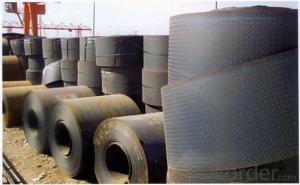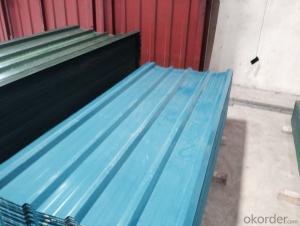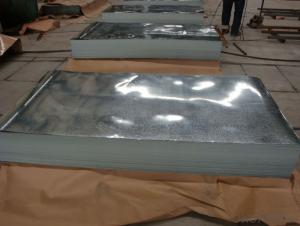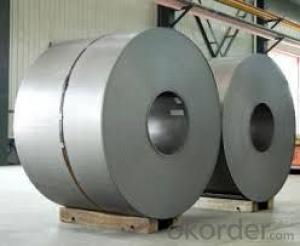High grade hot rolling steel checkered plate
- Loading Port:
- Qingdao
- Payment Terms:
- TT OR LC
- Min Order Qty:
- 500 m.t.
- Supply Capability:
- 50000 m.t./month
OKorder Service Pledge
OKorder Financial Service
You Might Also Like
The pattern shape
A tread surface plate is called a pattern plate, English Name: Diamond plate. The pattern of lentil shaped, diamond, round bean
Shape oblate shape, mixed, the market to the most common lentil shaped.
The specific application of
Pattern plate appearance, can slip, enhanced performance, and many other advantages,such as saving steel in transportation, construction, decoration, equipment around the floor,machinery, shipbuilding and other fields has been widely applied. In general, the use of side of the mechanics pattern plate performance, mechanical performance requirements is not high, so the pattern plate quality mainly flowering rate, as the pattern of pattern height, height difference. At present the common thickness on the market ranging from 2.0-8mm, the width of common 12501500mm two.
The relevant standards
In accordance with the provisions of national standards GB/T 3277 pattern plate, patternheight should be greater than or equal to the thickness of the 20% substrate.
Theoretical calculation of weight
Pattern plate, according to the material (aluminum alloy, stainless steel, ordinary steel etc.)different patterns of different shapes and different weight per square meter adjustment.
Class B common carbon steel rolling, the provisions of chemical composition meet the GB700"ordinary carbon structural steel technical conditions".
Pattern plate of high no less than 0.2 times the thickness of the substrate;
Checkered steel plate according to the weight of the actual weight of delivery or theory;
Mark example: made of Q235-A, size 4*1000*4000mm.
Peaberry pattern plate, mark it as: round bean plate Q235-A-4*1000*4000-GB/T 3277-91
Diamond pattern plate, mark it as: diamond pattern plate B 3-4*1000*4000-GB 3277-82
Steel with hot-rolled state of delivery;
Checkered steel plate surface without bubble, scar, crack, folding and inclusion, plate without delamination.
The surface quality is divided into two levels:
The general accuracy: steel surface with a thin layer of oxide scale and rust allowed, due to other local defects on the surface of oxide scale formed off rough and height or depthexceeds the allowable deviation of the ancient.
Burr height is not obvious and not more than the individual trace lines high allows patterns.The largest area of a single defect pattern with the square of the length of not more than.
High precision: steel surface with a thin layer of oxide scale, allowing the rust and the height or depth of no more than other local defects of half the thickness tolerance.
Pattern intact, a height of not more than half of the tolerance of thickness of the local slightburr allowed patterns.
- Q:What is the recommended storage method for the steel sheets?
- To effectively store steel sheets, it is recommended to place them in a well-ventilated and dry location. It is crucial to keep the sheets away from both moisture and direct sunlight, as these factors may lead to rust and material degradation. By stacking the sheets on pallets or racks with adequate spacing between them, potential damage can be prevented. Furthermore, it is advisable to cover the sheets with a protective material like a tarp or plastic wrap to provide additional protection against dust and other contaminants. To maintain their longevity and usability, regular inspection and maintenance of the storage area, along with maintaining an inventory of the sheets, are highly recommended.
- Q:How are steel sheets protected during welding?
- Steel sheets are protected during welding through the use of various methods such as shielding gases, fluxes, and coatings. Shielding gases, like argon or carbon dioxide, create a protective atmosphere around the welding arc, preventing oxidation and contamination of the molten metal. Fluxes can be applied to the surface of the steel sheets, which react with the impurities and form a protective slag layer. Additionally, coatings such as anti-spatter sprays or heat-resistant tapes can be used to protect the steel sheets from weld spatter and heat damage.
- Q:Can the steel sheets be used for storage cabinets?
- Indeed, storage cabinets can be constructed using steel sheets. Steel, a robust and enduring material, is frequently employed in the fabrication of cabinets and alternative storage options. By manipulating steel sheets, one can effortlessly fashion them into the preferred dimensions and style for cabinets, resulting in a resilient and dependable storage solution. Furthermore, steel possesses resistance to corrosion, rendering it ideal for preserving a multitude of items and guaranteeing the cabinets' durability.
- Q:Can steel sheets be bent or curved?
- Yes, steel sheets can be bent or curved. Steel is a malleable material, meaning it can be easily shaped or formed without breaking or cracking. This property allows steel sheets to be bent or curved into various shapes and angles, depending on the desired outcome. The process of bending or curving steel sheets typically involves the use of specialized tools such as press brakes or rollers. These tools apply force to the steel sheet, causing it to bend or curve according to the desired specifications. This ability to manipulate steel sheets makes them highly versatile and widely used in industries such as construction, automotive, and manufacturing.
- Q:How do steel sheets perform in terms of thermal conductivity?
- Steel sheets have a relatively high thermal conductivity, meaning they are able to transfer heat efficiently.
- Q:Are steel sheets suitable for decorative applications?
- Yes, steel sheets are suitable for decorative applications. Steel sheets can be used in various decorative applications due to their versatility, durability, and aesthetic appeal. They can be easily manipulated into different shapes, sizes, and patterns, making them suitable for a wide range of decorative purposes. Steel sheets can be used to create decorative wall panels, room dividers, ceiling tiles, and facades. They can also be used for decorative accents such as trims, moldings, and decorative screens. The smooth and reflective surface of steel sheets adds a modern and elegant touch to any space. Additionally, steel sheets can be coated or treated with various finishes and coatings to enhance their decorative properties. These finishes can include paint, powder coating, patina, or even specialized coatings like faux rust or metallic finishes. These options allow for a wide range of design possibilities, enabling steel sheets to complement any interior or exterior décor style. Moreover, steel sheets are highly durable and long-lasting, making them suitable for both indoor and outdoor decorative applications. They are resistant to corrosion, fire, and extreme weather conditions, ensuring that the decorative elements made from steel sheets maintain their appearance and functionality over time. In summary, steel sheets are indeed suitable for decorative applications. Their versatility, durability, and aesthetic appeal make them an excellent choice for creating visually appealing and long-lasting decorative elements in various settings.
- Q:Can steel sheets be drilled or machined?
- Yes, steel sheets can be drilled or machined.
- Q:What is the difference between coated and uncoated steel sheets?
- Coated and uncoated steel sheets differ primarily in terms of their protective layer and surface finish. Coated steel sheets, also known as galvanized steel sheets, are coated with a layer of zinc to prevent corrosion and increase durability. This zinc coating acts as a sacrificial layer, protecting the underlying steel from rust and other forms of damage. Additionally, coated steel sheets have a smoother and more polished appearance. On the other hand, uncoated steel sheets are not treated with any protective layer. This makes them more susceptible to corrosion, especially when exposed to moisture or chemicals. Uncoated steel sheets are often used in applications where corrosion resistance is not a significant concern, such as in construction projects where the steel will be covered or protected in some way. In terms of cost, coated steel sheets are generally more expensive than uncoated steel sheets due to the additional manufacturing process involved in applying the zinc coating. However, the added cost is justified by the enhanced durability and extended lifespan of coated steel sheets. In summary, the main difference between coated and uncoated steel sheets lies in the presence of a protective layer. Coated steel sheets offer superior corrosion resistance and have a smoother appearance, while uncoated steel sheets are more vulnerable to corrosion and have a rougher surface finish.
- Q:What is the process of embossing steel sheets?
- The process of embossing steel sheets involves creating a raised or recessed design on the surface of the steel through the application of pressure. This is typically done using specialized machinery that presses the steel sheet against a patterned die or roller, causing the desired design to be imprinted on the surface. The steel sheet is carefully positioned and aligned with the die, and then pressure is applied to create the embossed pattern. This process can be used to enhance the aesthetic appeal, add texture, or improve the functionality of steel sheets for various applications.
- Q:Are steel sheets fire-resistant?
- Yes, steel sheets are generally considered to be fire-resistant. Due to their high melting point and low combustibility, steel sheets can withstand high temperatures and prevent the spread of fire.
1. Manufacturer Overview |
|
|---|---|
| Location | |
| Year Established | |
| Annual Output Value | |
| Main Markets | |
| Company Certifications | |
2. Manufacturer Certificates |
|
|---|---|
| a) Certification Name | |
| Range | |
| Reference | |
| Validity Period | |
3. Manufacturer Capability |
|
|---|---|
| a)Trade Capacity | |
| Nearest Port | |
| Export Percentage | |
| No.of Employees in Trade Department | |
| Language Spoken: | |
| b)Factory Information | |
| Factory Size: | |
| No. of Production Lines | |
| Contract Manufacturing | |
| Product Price Range | |
Send your message to us
High grade hot rolling steel checkered plate
- Loading Port:
- Qingdao
- Payment Terms:
- TT OR LC
- Min Order Qty:
- 500 m.t.
- Supply Capability:
- 50000 m.t./month
OKorder Service Pledge
OKorder Financial Service
Similar products
New products
Hot products
Hot Searches
Related keywords




























